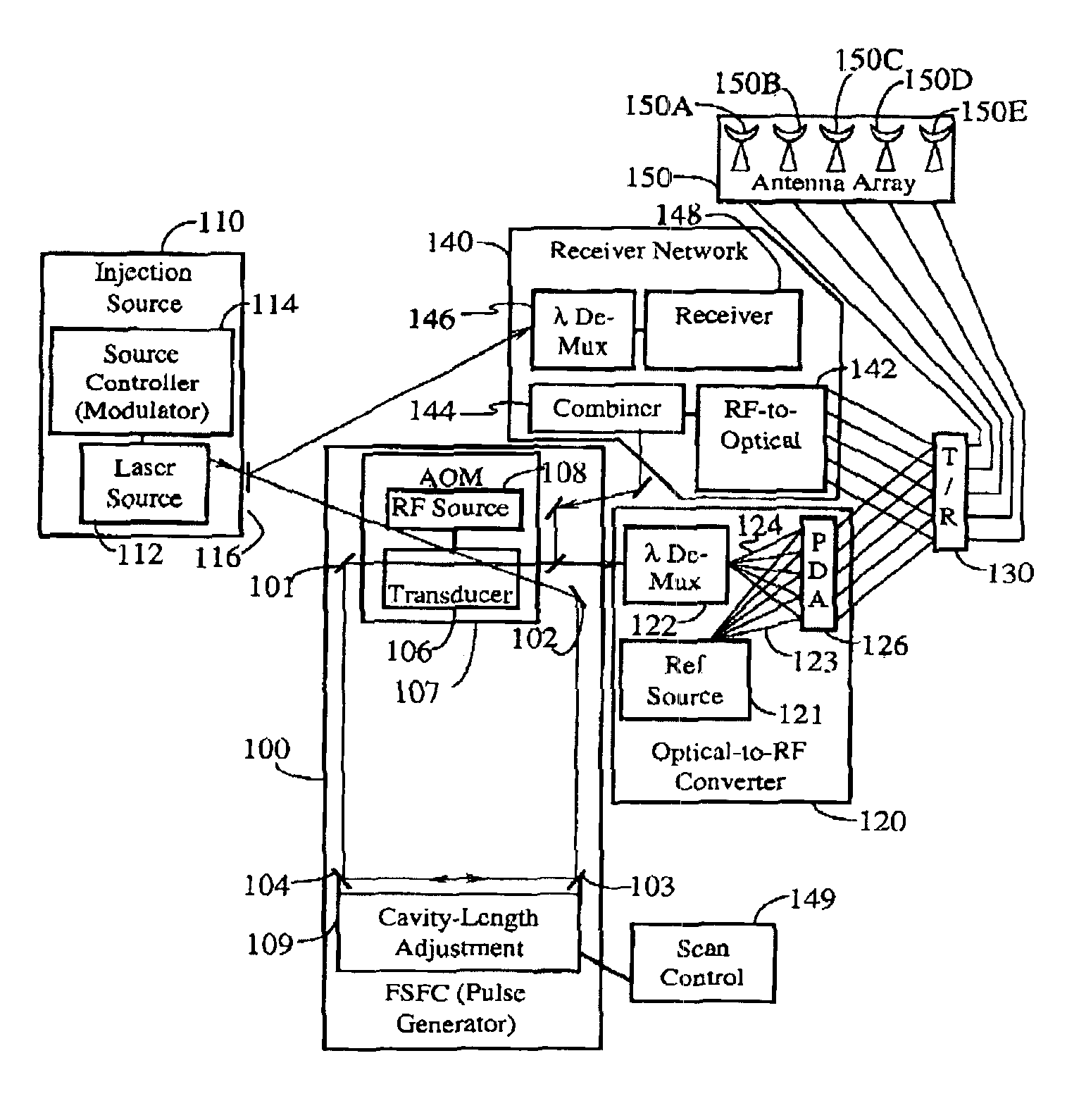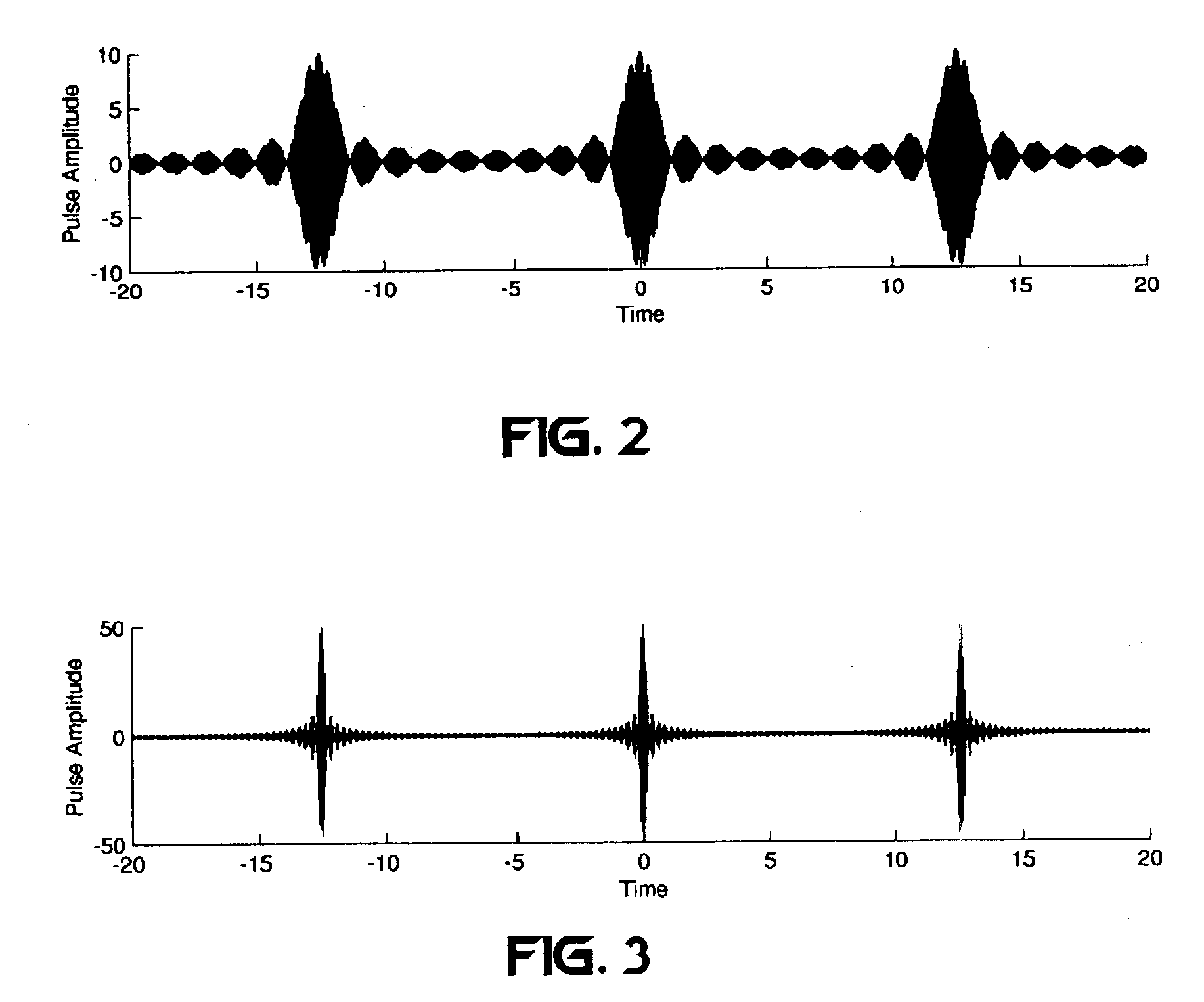Frequency-shifted feedback cavity used as a phased array antenna controller and carrier interference multiple access spread-spectrum transmitter
a frequency-shifted feedback cavity and antenna controller technology, applied in pulse techniques, instruments, and using reradiation, etc., can solve the problems of large scale, complex process, and difficult implementation of adaptive array deployment, and achieve the effect of easy adaptation
- Summary
- Abstract
- Description
- Claims
- Application Information
AI Technical Summary
Benefits of technology
Problems solved by technology
Method used
Image
Examples
Embodiment Construction
[0047]The standard method for sustaining laser oscillation uses feedback from a Fabry-Perot cavity. The multiple reflections within the cavity lead to destructive interference for all frequencies of light except those discreet frequencies that correspond to the standing waves of the cavity. This is demonstrated by frequency discrimination that occurs within an etalon. The intensity of light that is transmitted through an etalon is sharply peaked at the resonance of the cavity. Non-resonant waves destructively interfere within the cavity, thus canceling almost entirely. Therefore, a Fabry-Perot cavity used as a feedback cavity in a laser causes the laser output power to be distributed in a narrow spectral region that corresponds to the modes of the cavity.
[0048]A traveling-wave FSFC laser, as described in the cited papers co-authored by applicant, does not selectively attenuate frequencies. Rather, this laser is characterized by its unusually broad spectral output, which has no mode ...
PUM
 Login to View More
Login to View More Abstract
Description
Claims
Application Information
 Login to View More
Login to View More - R&D
- Intellectual Property
- Life Sciences
- Materials
- Tech Scout
- Unparalleled Data Quality
- Higher Quality Content
- 60% Fewer Hallucinations
Browse by: Latest US Patents, China's latest patents, Technical Efficacy Thesaurus, Application Domain, Technology Topic, Popular Technical Reports.
© 2025 PatSnap. All rights reserved.Legal|Privacy policy|Modern Slavery Act Transparency Statement|Sitemap|About US| Contact US: help@patsnap.com



